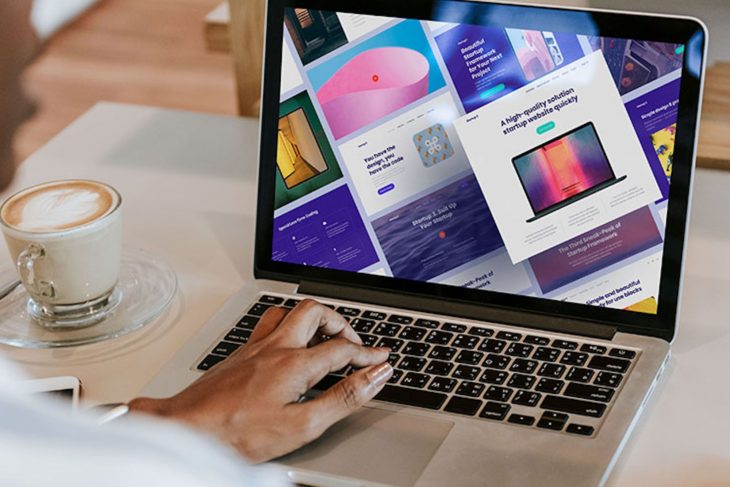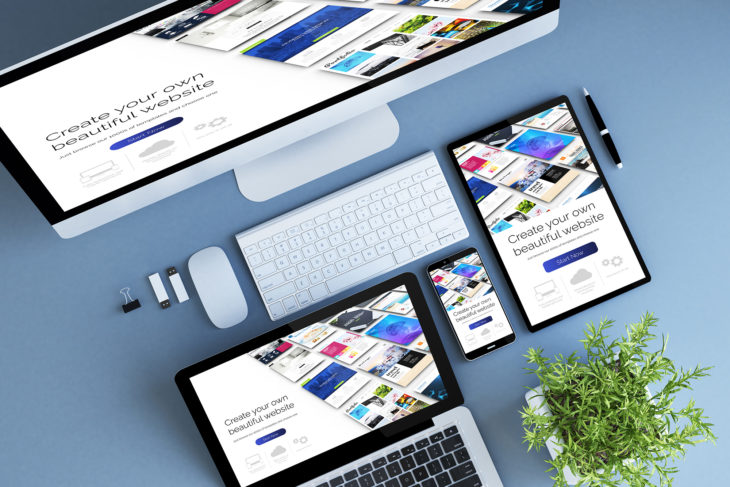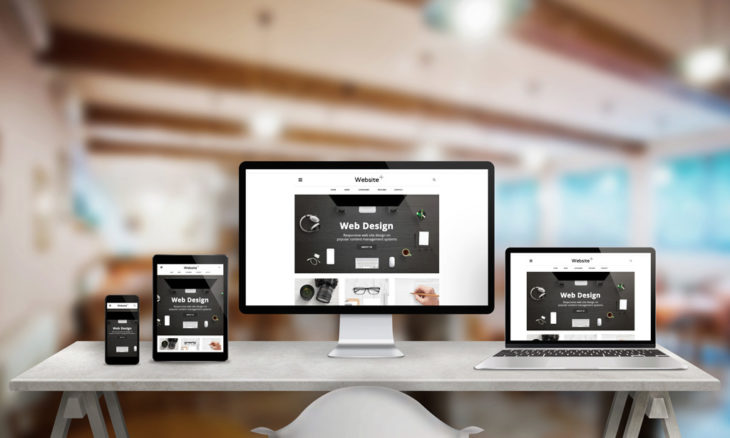Today, almost any company or professional has a website for their business or project. It has already become a habit to “Google” the name of the company or person in which we are interested to find more information about it before deciding whether or not to buy. We also look for it on social networks.
How to create one? What are the steps to create it?
The process of creating it affects many levels, both those that the user sees (front-end) and those that do not (back-end). These can be web design, corporate identity, the web application of this corporate identity, usability of the web, web accessibility, development, systems and, of course, quantity and quality of the information that is posted on it.
In short, there are many aspects that a company or professional must take into account when creating one. We will review in this post the most important things to consider.
Contents
1. A web page that meets your objectives

Source: medium
Why do you want it? It seems like an obvious question, but you have to think carefully about the answer because all the subsequent development will depend on it, and we are not just talking about programming. Being clear, what is the fundamental objective of it will help you focus on the entire process, emphasizing the key points within your digital strategy. A website focused on selling (e-commerce) is not the same as a corporate one, to give an example.
2. A website with its own personality

Source: scpie
Do not make it “because it is fashionable and everyone has one.” It is clear that your brand can not be left behind, but making a website just to have it can not be the only reason, or even the primary reason, why you decide to propose the project. It is going to be your main showcase on the internet, and it has to talk about you, your brand and your project. You have to feel identified with it; It has to be your cover letter, your information center and your connection hub. That is why any one does not serve you.
It must be aligned with your branding strategy; in fact, it is a fundamental piece of it. Whoever comes to your website must be able to live the same brand experience as someone who knows you through other channels, whether physical or digital.
Take care that your corporate identity is reflected on the web and that your brand is reflected in it as you want it to be reflected: typography, colors, brand applications, style of copy, tone of texts, etc. Also, take care that the service you offer online is on par with that you offer on other channels.
3. Find a host

Source: exposureville
Dealing with website maintenance, server repairs and constant updates can be quite challenging. A lot of people and companies which are starting a website from scratch, opt for a hosting service. But which hosting you need to choose and how do you know it is the right one? Well, basically, take a look at your budget and space you will need, but you can find more information on the webpagescientist.com.
4. Easy to use

Source: mobile-friendly site
Beauty is often not enough. A spectacular but complicated web page will hardly get visitors to return. It may be that the photos of your hotel are spectacular, but if the reservation process is slow, complicated… you probably will not achieve your goal.
Also ensure that the presentation of information is orderly. The definition of the content structure is essential, as well as the design of how access will be to them. You can use menus to present the pages of it in a clear and structured way, as well as call-to-action buttons. Organize content well by subject and facilitate various accesses to reach the same content.
The loading time of the pages is also decisive. Remember that the visitor will have little patience and, if he tires of waiting, he will leave and probably will not return later. In addition, today there is another fundamental element: it is important that it has a responsive web design, so that it is navigable on smartphones and tablets. This is vital, especially after the algorithm change in Google in mobile searches.
5. A web page for users

Source: TwoGuys Creative
Surely you have ever heard that web pages are designed for Google. Well, although there is enough truth in this statement, the thing is not only like this. It is worth that Google has a lot of power, but in the end it will be a person of flesh and blood who will visit your website and who will decide whether to buy your product or not. Make your business website focused on people; Only then will you connect with your potential clients and establish lasting relationships.
Offer visitors information about your products and services, make it easy for them to contact you, tell them about you, your company and your values, reward them with valuable content, tell them things they won’t find anywhere else and explain why they should buy your product and not your competition.
6. A website that meets standards

Source: KND Digital
Make sure that the code of your new website complies with W3C standards. Perhaps it involves dwelling a little more on some aspects of development, but compliance with these technical rules defined by the W3C guarantees something as important as universal access. In other words, correct access to our website from any device and / or current browser, which increases the visibility of your project, allowing you to reach more audiences, guarantees its compatibility.
7. A website that is profitable

Source: Shutterstock
Contrary to what many believe, having the web published is not the end of the process, but the beginning of it. You have made a significant investment in your project and it is time for it to get going and start paying off. But a website by itself does little good. If nobody knows who is there or what advantages access can bring, you will hardly achieve what you intended.
For all this, you will need a plan focused on giving visibility to the web and achieving the objectives that you set for yourself in the first point. Maybe it’s the sale of certain products or services or maybe it’s contacting potential clients or investors for your company or project.
Conclusion
As you can see, making a good one is not an easy task. You just have to be clear about the points to be worked on and, then, organize the project in phases, so that you don’t forget any of the steps to create a web page. The result will be a beautiful website and, above all, useful for your business.
